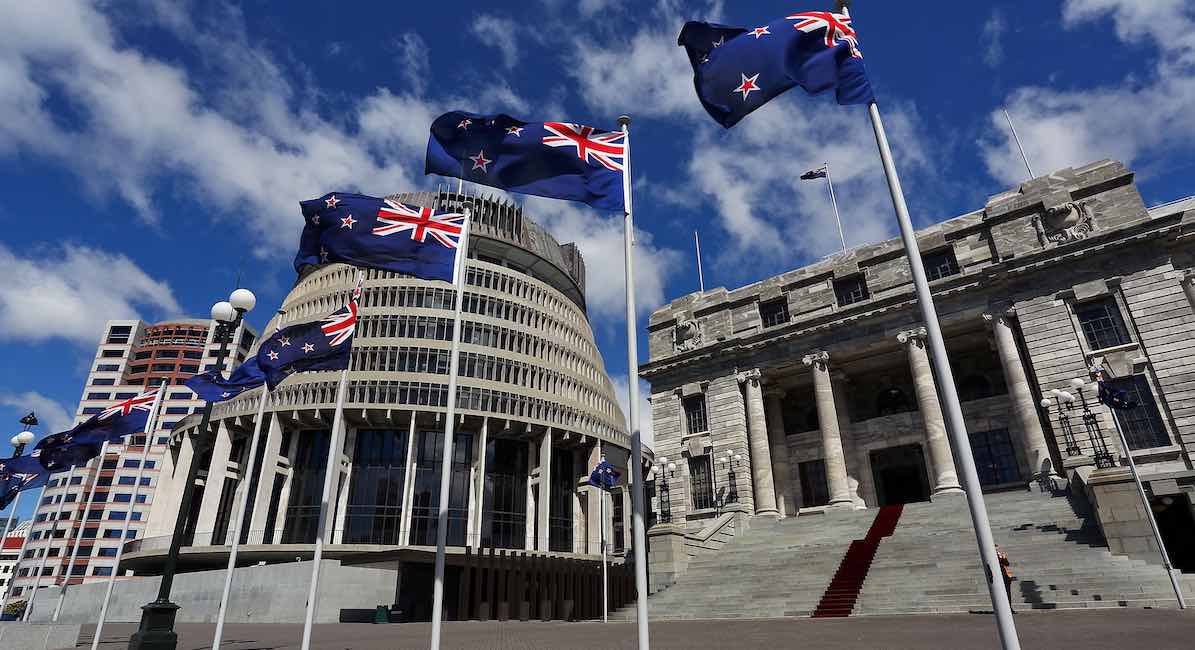(Right to Life UK) New Zealand Prime Minister Jacinda Ardern has joined 80 other politicians in voting against an attempt to require health professionals to give medical help to babies born alive after ‘failed’ abortions.
The Care of child born after abortion amendment was brought forward by the MP for Tamaki, Simon O’Connor at the committee stage of the Abortion Legislation Bill. The vote was lost 37 votes to 80.
The amendment would have required, that if a baby was born alive following a failed abortion, a qualified health practitioner or any other health practitioner present at the time the child is born, would have a duty to provide the child with appropriate medical care and treatment.
It would have also required the medical care and treatment of a child born as a result of a failed abortion to be no different than the duty to provide medical care and treatment to a child born other than as a result of an abortion.
Data from the few other countries where there are similar extreme abortion laws to the one proposed in New Zealand shows that it is likely that many more babies will be born alive following abortions, as it will in practice allow abortion for any reason between 20-weeks and birth – when unborn children are much more likely to survive a ‘failed’ abortion.
A similar law in Victoria, Australia allows for abortion right through to birth on physical, psychological and social grounds when approved by two doctors; this can be the abortion operating surgeon and anaesthetist.
This has, in practice, allowed for abortion on demand, for any reason, right through to birth in Victoria.
Ahead of the legislation being introduced in Victoria in 2008, abortion activists claimed that, although abortion would, in practice, be allowed for any reason, doctors would ensure that the vast majority of abortions would only occur in rare circumstances, such as when a baby has a condition where they would either die in the womb or shortly after birth (a fatal foetal abnormality or life-limiting disability) – similar claims are currently now being made about the proposed NZ abortion law by abortion campaigners and MPs in New Zealand.
Data from the Consultative Council on Obstetric and Paediatric Mortality detailing 12 years of the law being in operation in Victoria shows that this has not been the case.
This data shows that since the law changed in 2008, 1,418 late-term abortions (between 20-weeks’ gestation and birth) have been performed by doctors for ‘psychosocial’ reasons – these were terminations where the baby did not have a disability and the abortion was performed on social grounds. In 2011, one of these abortions on social grounds occurred at 37 weeks.
Under New Zealand law currently, abortion is allowed post-20 weeks on very strict grounds (when the abortion is “necessary to save the life of the woman or girl or to prevent serious permanent injury to her physical or mental health”).
This strict law has meant that abortions post 20-weeks are rare – for example 72 abortions occurred after 20-weeks in New Zealand in 2017.
Victoria has a population that is only 32% larger than New Zealand’s, but the number of abortions that occurred post 20-weeks were much higher, 323 or 348.61% higher than the number that occurred in New Zealand that same year (published data for Victoria has not been released for 2018 yet).
In Victoria scores of babies have been left to die after being born alive during a number of ‘botched’ terminations.
The Victorian Consultative Council on Obstetric and Paediatric Mortality and Morbidity reported that in 2012 there were 53 ‘terminations of pregnancy’ after 20 weeks ‘resulting in live birth’.
By contrast, a 2008 report for England and Wales found that 66 infants were born alive after NHS terminations in one year. While these figures are comparable in number, Victoria’s population of 6.36 million is just a tenth of the size of the population in England and Wales.
READ: New Zealand takes another step toward decriminalizing abortion
At committee stage on Tuesday, MPs also voted down a number of other amendments that would have saved lives and protected women including amendments to provide the following:
- Provide pain relief to babies being aborted between 20-weeks and birth.
- Agnes Loheni – SOP 461
- Ayes 43: Noes 76
- Provide additional safeguards to help prevent sex-selective abortions.
- Parmjeet Parmar – SOP 475
- Ayes 29: Noes 89
- Ensure safeguards were in place to protect vulnerable women, including those with an intellectual disability, from being coerced into an unwanted abortion.
- Joanne Hayes – SOP 462
- Rejected in a verbal vote
- Restricting abortions between 20-weeks and birth (to when there is risk to the life, or of serious harm to the physical or mental health, of the woman; or the fetus is so medically impaired as to be unlikely to survive beyond birth.)
- Greg O-Connor
- Ayes 45: Noes 73
- Restricting abortions between 20 weeks and birth (to where a woman’s life or health is at risk – and requiring doctors to be involved with later abortions rather than the proposed requirement that any health professional can perform an abortion.)
- Agnes Loheni – SOP 460
- Ayes 43: Noes 74
- Strengthen conscientious objection protections for health professionals.
- Chris Penk – SOP 469
- Ayes 35: Noes 83
- Requiring ongoing collection of accurate abortion statistics. Currently, the Bill only requires data collection during the first 18 months of the proposed abortion legislation coming into force.
- Simeon Brown – SOP 480
- Ayes 37: Noes 82
Editor’s Note: This article was published by Right to Life UK and is reprinted here with permission.
“Like” Live Action News on Facebook for more pro-life news and commentary!







